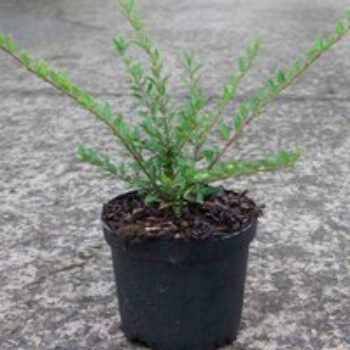- The Amazon Rainforest, where next year’s COP30 climate summit will be hosted, is reeling from two consecutive years of severe drought, with major rivers at record lows, leading to water shortages and transportation disruptions for local communities.
- While deforestation in the Brazilian Amazon plunged during that period, the rainforest remains under threat from land grabbing, illegal gold mining, diminishing rainfall, and outbreaks of fire, many of them ignited by criminals.
- The world’s greatest tropical rainforest has also drawn the interest of carbon traders, but evidence of fraud within some carbon credit projects unearthed by Mongabay highlights the need for greater transparency and accountability in the carbon market.
- Amid all these threats, reforestation and restoration projects led by Indigenous communities and conservation organizations offer hope for a sustainable future for the Amazon.
In just under a year from now, the world will turn to Belém, Brazil, a city on the edge of the Amazon Rainforest, for the COP30 United Nations climate summit. For many conservationists and diplomats, the hope is that the setting will inspire authorities to finally lead breakthroughs in the Paris Agreement and keep climate change under some degree of control. While hosting the summit in an Amazonian city carries significant political and symbolic weight, the location also underscores contradictions.
As the global spotlight shines on Belém, visitors and the world will be exposed to the Amazon’s stark contradictions. They will witness the region’s breathtaking beauty and crucial role in mitigating climate change. However, the city chosen to champion environmental action is grappling with unsustainable development projects to host the event.
This collision of ambition and reality will underscore the ongoing struggle between conservation efforts and the relentless pressures of economic development, land grabbing, and illegal activities that threaten the rainforest’s delicate ecosystem.
For the past two years, the Amazon experienced consecutive extreme droughts, with 2024 being exceptionally severe, leaving major rivers at record lows. These phenomena reflect a combination of factors, including deforestation, climate change, and natural variability. The droughts have had cascading effects on local communities, disrupting transportation, fishing, and access to clean water.

Adding to the crisis, fire outbreaks, many suspected to be criminal, have consumed an area of the rainforest larger than Costa Rica. The fires, fueled by dry conditions and human activity, released vast amounts of carbon dioxide into the atmosphere, exacerbating climate change, while the smoke they generated blanketed vast regions, impacting air quality and human health.
Will the Amazon’s climate return to normal in 2025 after two years of drought? Will the rains return, replenishing rivers and restoring ecosystems? Or has a drier climate become the new reality for the rainforest? Experts warn that the Amazon may be approaching its point of no return, as deforestation and forest degradation have already affected around 13% of the biome, according to the Monitoring of the Andean Amazon Project (MAAP), a U.S.-based nonprofit. The forests are drying out, making them more vulnerable to fires, with potentially irreversible damage looming. A report from World Weather Attribution (WWA) estimates that climate change increased the likelihood of Amazon droughts by a factor of 30.
Paradoxically, while the drought and fires rage, deforestation in the Brazilian Amazon, home to about two-thirds of the rainforest, has plunged recently. Deforestation rates in the country dropped by 30.6% over the past year, hitting the lowest level since 2015. This decline is attributed, in part, to heavier enforcement of environmental regulations. As a result, deforestation linked to garimpos, small-scale gold miners (often illegal), in the Amazon plummeted by 30% in 2023 compared to 2022.

Unmasking new crimes
In recent years, the Amazon has seen a new type of shady business under the canopy: carbon credit projects. Several news outlets, including Mongabay, reported on suspicious carbon deals. An analysis commissioned by Mongabay revealed inconsistencies in timber volumes declared by carbon projects in Brazil that relied on forest management plans — systems in which timber is cut and sold under strict environmental regulations to ensure the area is monitored and illegal deforestation is avoided. These discrepancies suggested the projects may have issued fake documents to launder timber from illegally deforested areas.
Following Mongabay’s investigation, the Brazilian Federal Police launched a raid on these projects, resulting in arrests and asset seizures and confirming that these “green” projects were actually contributing to Amazonian deforestation.
Besides shady carbon credit projects, another new topic on the crime front is the growing presence of criminal organizations in the rainforest. Those gangs operate at the nexus of drug trafficking, illegal logging and illegal mining, often collaborating with each other. They’re highly organized and well-equipped groups, often with more resources and firepower than the authorities tasked with combating them.

The Javari Valley, on the triborder region of Brazil, Peru and Colombia, is beset by gangs that profit from drug trafficking, illegal logging and land grabbing. Two years after the murders there of journalist Dom Phillips and Indigenous expert Bruno Pereira, local communities still report feeling insecure, as organized crime continues to operate in the area.
Investigators say a transnational criminal organization involved in illegal poaching, money laundering and corruption is behind the murders.
Criminal gangs have also established a network of clandestine airstrips within and around Indigenous communities and forest reserves to transport drugs and launder illegal timber. For example, in the Ucayali region of Peru, a Mongabay investigation found that drug traffickers have established 31 illegal airstrips, 13 of which are located within Indigenous territories and 13 surrounding them. This has led to violence and displacement as criminal groups seek to silence those who oppose their activities.
The convergence of these illegal activities has made it increasingly difficult for authorities to combat them effectively. Organized crime groups often outsource specific tasks, creating a fragmented network that’s difficult to trace.
The presence of criminal organizations in the Amazon has devastating consequences for the environment, local communities and the rule of law. Deforestation, mercury contamination from illegal mining, and violence against Indigenous communities are just some of the impacts of these illegal activities. In the Yanomami Indigenous Territory, for example, the involvement of organized crime has led to an increase in sexual violence and drug trafficking. The lack of effective law enforcement and the complicity of corrupt officials further exacerbate the problem, allowing these criminal enterprises to flourish and continue their destructive practices with impunity.
In Brazil, the military not only failed to adequately protect these territories — it also effectively sabotaged efforts to evict invaders.

Persistent threats
Alongside new climate and crime challenges, the Amazon faces persistent threats from illegal activities and unsustainable development projects. Land grabbing remains a pervasive problem, with land grabbers often using fronts to conceal their activities, making it difficult to hold them accountable and allowing them to perpetuate their crimes.
Using front people, often relatives or trusted employees, to mask ownership of assets and evade legal repercussions is a widespread tactic these organizations employ. This practice makes it challenging to identify and hold the actual perpetrators accountable for environmental damage and human rights abuses.
These tactics allow land grabbers to clear vast tracts of rainforest for cattle ranching or soy plantations, driving deforestation and often violence.
A year-long Mongabay investigation revealed a disturbing connection between the illegal cattle ranching boom in the Arariboia Indigenous Territory and a record-high number of killings of Indigenous Guajajara people. Arariboia is ostensibly protected from incursion by outsiders, but large plots of land inside the territory have been illegally used for cattle ranching. Our investigation uncovered a rise in environmental crimes in the region, including illegal deforestation and the construction of an unlicensed airstrip.
Analysis of satellite images, land leases and incident reports revealed a pattern of targeted killings of Indigenous Guajajara amid the expansion of illegal cattle ranching and logging. Our investigation found that many of the killings occurred in areas where police operations targeted illegal logging and areas embargoed due to unauthorized deforestation. While there’s no evidence linking the owners of these businesses to the killings, the investigation’s findings underscore the deadly consequences of the unchecked expansion of illegal activities within and around Indigenous territories.
Illegal gold mining, driven by record-high global prices for the precious metal, continues to plague the Amazon, contaminating rivers with mercury and threatening Indigenous communities. In Itaituba, known as Brazil’s “gold capital,” recent government crackdowns have been met with resistance from miners, as revealed by Mongabay. This struggle highlights the economic dependence of many communities on illegal activities, and the challenges in transitioning to more sustainable livelihoods.
These challenges arise directly from the global appetite for commodities like gold, soy and beef. Despite pledges to eliminate deforestation from its supply chains, JBS, the world’s largest meatpacking company, has been repeatedly accused of sourcing beef from illegally deforested areas. The demand for these commodities creates economic incentives that often outweigh environmental concerns, posing a significant obstacle to conservation efforts.
Adding to these concerns are the Brazilian government’s plans to develop new oil drilling sites in the Amazon and to pave a stretch of the BR-319 highway, topics likely to spark discussions in 2025 about rainforest conservation. State oil company Petrobras is pushing to explore an offshore oil site at the mouth of the Amazon. This project contradicts President Luiz Inácio Lula da Silva’s campaign pledges to prioritize renewable energy and could severely impact Amazonian ecosystems. Meanwhile, the plan to pave the “middle section” of the BR-319 highway, connecting the cities of Porto Velho and Manaus, raises concerns about increased deforestation and the expansion of destructive industries into one of the best-preserved regions of the rainforest.

Resilience and restoration
Yet hope persists despite the challenges. In addition to plunging deforestation rates, reforestation and restoration projects are underway. In the Rio Pindaré Indigenous Territory, the Guajajara people are restoring the forest along crucial headwaters, ensuring the future of rivers and streams. They collect healthy seedlings from the rainforest and transplant them to the springs, using traditional knowledge to restore the ecosystem.
In Amapá state, communities in the Bailique archipelago in the mouth of the Amazon are adapting to the changing water dynamics. As fruits such as açaí berries become saltier with the incursion of seawater from the Atlantic, locals are learning to catch rainwater and filter it for drinking, and planting açaí palm trees farther from the riverbank to protect them from erosion. The community is also working with scientists to monitor the erosion and find ways to mitigate its effects.
Further inland, the Reconecta Project led by biologist Fernanda Abra is installing artificial bridges, or canopy bridges, over the BR-174 highway in the Waimiri-Atroari Indigenous Territory. These bridges allow arboreal mammals, such as monkeys and sloths, to safely cross the road, preventing them from being isolated in fragmented habitats. The project has successfully documented different species using the canopy bridges, demonstrating the effectiveness of this approach.
Banner image: Emergent rainforest tree in the Ecuadorian Amazon. Photo by Rhett Ayers Butler for Mongabay.
FEEDBACK: Use this form to send a message to the author of this post. If you want to post a public comment, you can do that at the bottom of the page.








